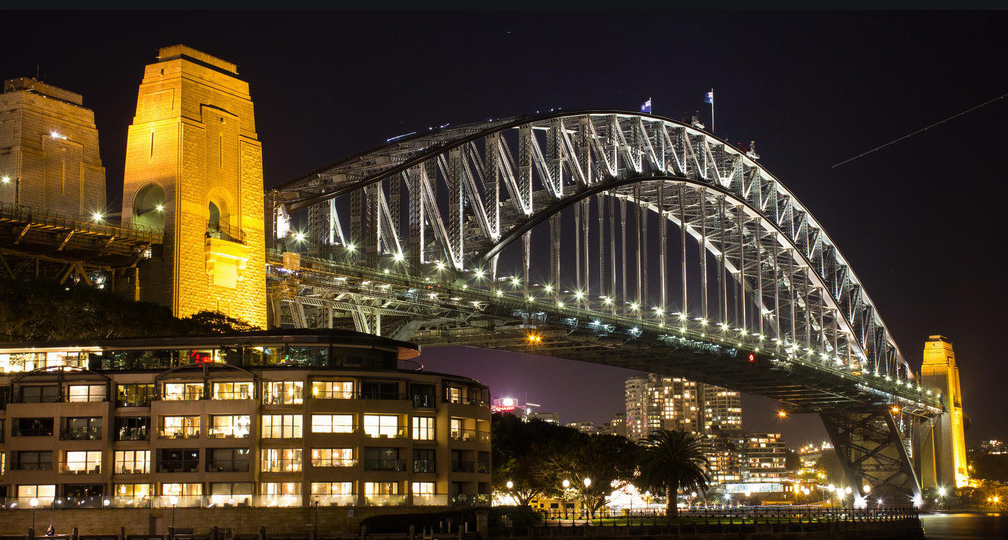Laser processing equipment: potential market growth opportunities for bridge applications
Release date:2020-06-15
(同高科技)
During the design and construction of bridges, the concept of proper maintenance in the future has only been widely accepted by engineers in recent decades. Therefore, many owners and operating units of old bridges are facing a severe challenge, that is, how to maintain the bridge's structural safety while ensuring the normal operation of the bridge. The following will take the famous Sydney Harbour Bridge in Australia as an example to describe their maintenance experience. (Same as high-tech)

Cost-effective laser processing method
The Sydney Harbour Bridge is a single-hole arch bridge. It has been in service since it was completed and opened to traffic in 1932. It was once known as the world's first single-hole arch bridge and is a representative building of Sydney in the early days. (Same as high-tech)
Every day, the Sydney Harbour Bridge carries more than 200 trains, 160,000 cars and about 2,000 bicycles. This bridge is not only a symbol of Sydney culture, but also a vital part of Sydney's urban transportation infrastructure. The agency responsible for the maintenance and operation of this bridge is the New South Wales Roads and Maritime Services Company (RMS), whose main task is to clean and repaint the steel structure, stone abutments and other areas of the bridge. (Same as high-tech)
Because the initial anticorrosive paint of the steel structure part of this bridge contains lead, the steel truss of the bridge has a general aging phenomenon. Therefore, the bridge maintenance unit decided to use a more durable and environmentally friendly modern coating to replace the previous anti-corrosion coating. The traditional method of removing the original anticorrosive paint and steel structure rust is to use electric tools and sand blasting to remove rust, but this method requires a lot of manual labor and can easily cause worker injuries. Not only that, in some special locations of the bridge, these maintenance equipment can not be reached at all, and sometimes even the operators are difficult to reach. In order to solve these problems, New South Wales Roads and Maritime Services and the Australian National University jointly developed a structured internal laser cleaning equipment. The entire R&D project lasted three years and was funded by the Australian Research Council. Recently, the team tested this latest laser cleaning technology for the first time to determine whether it can be used in the maintenance of the Sydney Harbour Bridge.
The method of using continuous laser and nanosecond pulse laser technology for paint peeling has been used for many years, and a certain industrial scale system has been formed, and a large number of suppliers can be found everywhere. However, the nano-scale pulse laser will generate a lot of heat when cleaning the surface of the structural object, and the temperature is enough to melt the steel surface. Therefore, some engineers worry that if the nanosecond laser pulse technology is applied to the Sydney Harbour Bridge, it may cause the aging steel structure to be more fragile, thereby causing the cracks to spread. In addition, the high temperature is also easy to cause workers to be burned, and the materials around the laser processing point are also easily damaged. (Same as high-tech)
In order to solve the above problems, the maintenance team adopted a new technology for surface cleaning of steel structures. This new technology is based on Professors Andrei Rode and Stephen Madden at the Australian National University. According to a recent study of this, this is a powerful new ultra-short pulse cold laser technology used in the femtosecond range, which is 1 million times shorter than the nanosecond pulse. (Same as high-tech)
This treatment technology not only can quickly clean the thick protective primer on the surface of metal and stone to reach the scale of industrial application, but also can minimize the damage to the surface of metal and stone. "Femtosecond-level cold laser pulses will not cause the metal surface to melt, just like a woodpecker pecks off paint, and will not cause cracks in the underlying metal." said Peter Mann, strategic infrastructure manager for Sydney Roads and Maritime Services . "This technology and its physical properties are very valuable because the roughness of the bottom material will increase the adhesion of the protective coating." Mann continued, "steel bridges will encounter many problems during the maintenance process, such as corrosion and Fatigue load. Therefore, when using laser technology to maintain the bridge, extra care needs to be taken to prevent it from adversely affecting the service life of the bridge. The purpose of our research is to find and verify the most cost-effective laser treatment method to date This method will not damage the steel structure." (Same as high-tech)
The traditional surface treatment method is sandblasting, but due to the particularity of the Sydney Harbour Bridge, sandblasting cannot be applied in this project. The reasons are as follows: 1. The bridge arch is made of a large number of hollow steel structural members, which form a closed working space with a total length of about 7.2 kilometers, which cannot be sandblasted; 2. These members are located It is difficult for engineers and technicians to work in different positions of the arch ring; 3. There is an access hole every 6 meters of the rod, but these holes are only 300 mm in diameter, and most workers cannot enter; 4. The internal space of the rod is narrow, the location is intricate, and the visibility is low. For the above reasons, since the bridge was built, the inside of the arch circle has never been repainted. However, with the advancement of technology, laser cleaning technology has gradually become a possible solution. (with
high tech)
Efficient ultra-fast laser cleaning equipment (same as high-tech)
The second challenge faced by the maintenance team is the development of a steel structure rod cleaning robot. This cleaning robot not only needs to walk in narrow steel structure rods, but also needs to carry laser cleaning equipment. Although the maintenance team has previously developed a walkable robot, they also need to shrink the laser processing equipment so that the robot can carry it and enter the work area. (Same as high-tech)
Mann said that laser processing has not yet become the mainstream of infrastructure maintenance technology, and there are still some difficulties that need to be overcome. "The current difficulty facing the logistics department is how to deploy and use this laser equipment on site, especially in bridge engineering. Considering the size of the Sydney Harbour Bridge and the inaccessibility of the rods, the laser equipment and robots need to be small enough In order to enter the structure. But for most existing lasers with sufficient power, it is necessary to use large electrical equipment to drive the laser head, such as laser scanners, refrigeration equipment and vacuum devices." He said.
Although there is a small vacuum cleaner on the laser head for cleaning the laser irradiation area, the equipment is also equipped with an independent dust collection device to filter impurities in the air. Before painting, the robot will use a vacuum cleaner to clean up the large debris that falls on the surface of the steel structure and will blow the surface clean. (Same as high-tech)
The first task of the R&D team of the Australian National University is to develop an ultra-fast laser cleaning technology under the best laser radiation conditions and highest efficiency. The cleaning speed is 1 square meter/hour, and the laser power is 1 square meter/hour. All The technical premise is to minimize residual stress and metal damage. The Australian Nuclear Science and Technology Organization and the University of Sydney will test the residual stress and fatigue strength performance. Road and Maritime Services will provide the steel and paint samples actually used for the bridge test and organize the on-site bridge test. Experts from the University of Canberra will evaluate the testing of laser processing technology on the granite part of the main tower of the bridge. (Same as high-tech)
Once the laser cleaning technology has passed the test, the next stage will be the development of a special auxiliary connection device that can be installed on Waumbot. Wombot is a bridge maintenance robot jointly developed by the Road and Maritime Services Company and the University of Technology (Sydney) after several years. It is currently used in bridge engineering. This laser cleaning technology is not only suitable for cleaning the inner walls of steel components, but also for the maintenance of the outside of the structure by using a handheld laser. (Same as high-tech)
Assuming that this research project can be successful, it will still take five years to clean and repaint the internal structure of the bridge based on the number of laser processing equipment used today. According to current estimates, even if there are 10 lasers with a power of 1 kilowatt working 24 hours a day and 7 days a week, it still takes 3-5 years to complete this work. (Same as high-tech)
Nevertheless, laser processing technology still has a huge potential market, and it is not limited to the transportation field. From the perspective of bridges alone, there are tens of thousands of steel bridges in urgent need of maintenance worldwide. For other infrastructure, this technology can also come in handy, such as aircraft repair. If a technology can eliminate the risks caused by damage to basic materials, then this technology will have a great future.
This new technology may also be applied to the field of cultural relics restoration, because when repairing cultural relics, technicians do not have to worry about the problem of excessive temperature. Some practical cases also prove that it is very economical to use nanosecond pulse laser cleaning technology to repair sculptures, bronze statues, fine clay, and even the entire building facade. However, for delicate objects such as paintings, gold-plated surfaces, and textiles that cannot withstand rising temperatures, the ultrashort pulse method may be able to provide some inspiration. Ultrafast laser cleaning has been used to clean complex and fragile gold coatings, which was previously unmanageable. However, with the emergence of high-power new technologies, the application of this technology will be greater, such as applied to heavily polluted structures.
(Same as high-tech)


 English
English 中文
中文

